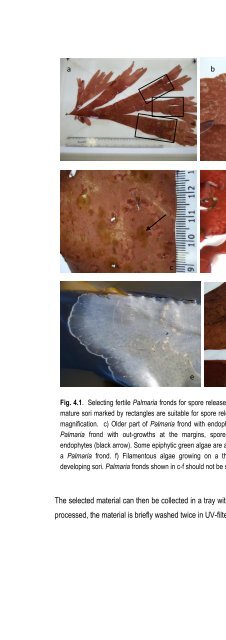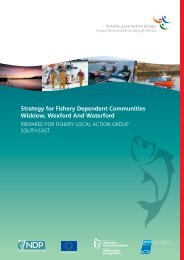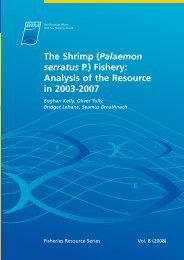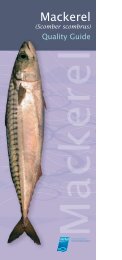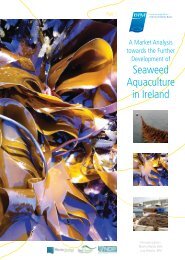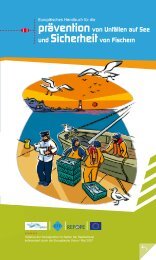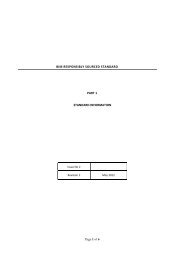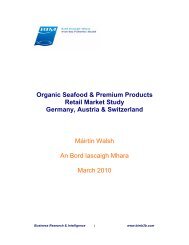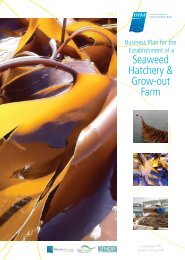Cultivating Palmaria palmata - Bord Iascaigh Mhara
Cultivating Palmaria palmata - Bord Iascaigh Mhara
Cultivating Palmaria palmata - Bord Iascaigh Mhara
Create successful ePaper yourself
Turn your PDF publications into a flip-book with our unique Google optimized e-Paper software.
a b<br />
Fig. 4.1. Selecting fertile <strong>Palmaria</strong> fronds for spore release. a) Young reproductive tetrasporophyte – areas of<br />
mature sori marked by rectangles are suitable for spore release. b) Fertile section of <strong>Palmaria</strong> frond at higher<br />
magnification. c) Older part of <strong>Palmaria</strong> frond with endophytes - brown areas indicated by arrow. d) Young<br />
<strong>Palmaria</strong> frond with out-growths at the margins, spore-containing sori (white arrow) and patches with<br />
endophytes (black arrow). Some epiphytic green algae are also attached to the frond. e) Bryozoans growing on<br />
a <strong>Palmaria</strong> frond. f) Filamentous algae growing on a thallus of <strong>Palmaria</strong>; arrow indicates small area of<br />
developing sori. <strong>Palmaria</strong> fronds shown in c-f should not be selected for spore release.<br />
The selected material can then be collected in a tray with a little seawater. When each batch of fronds has been<br />
processed, the material is briefly washed twice in UV-filtered seawater.<br />
c<br />
e<br />
d<br />
f<br />
27


